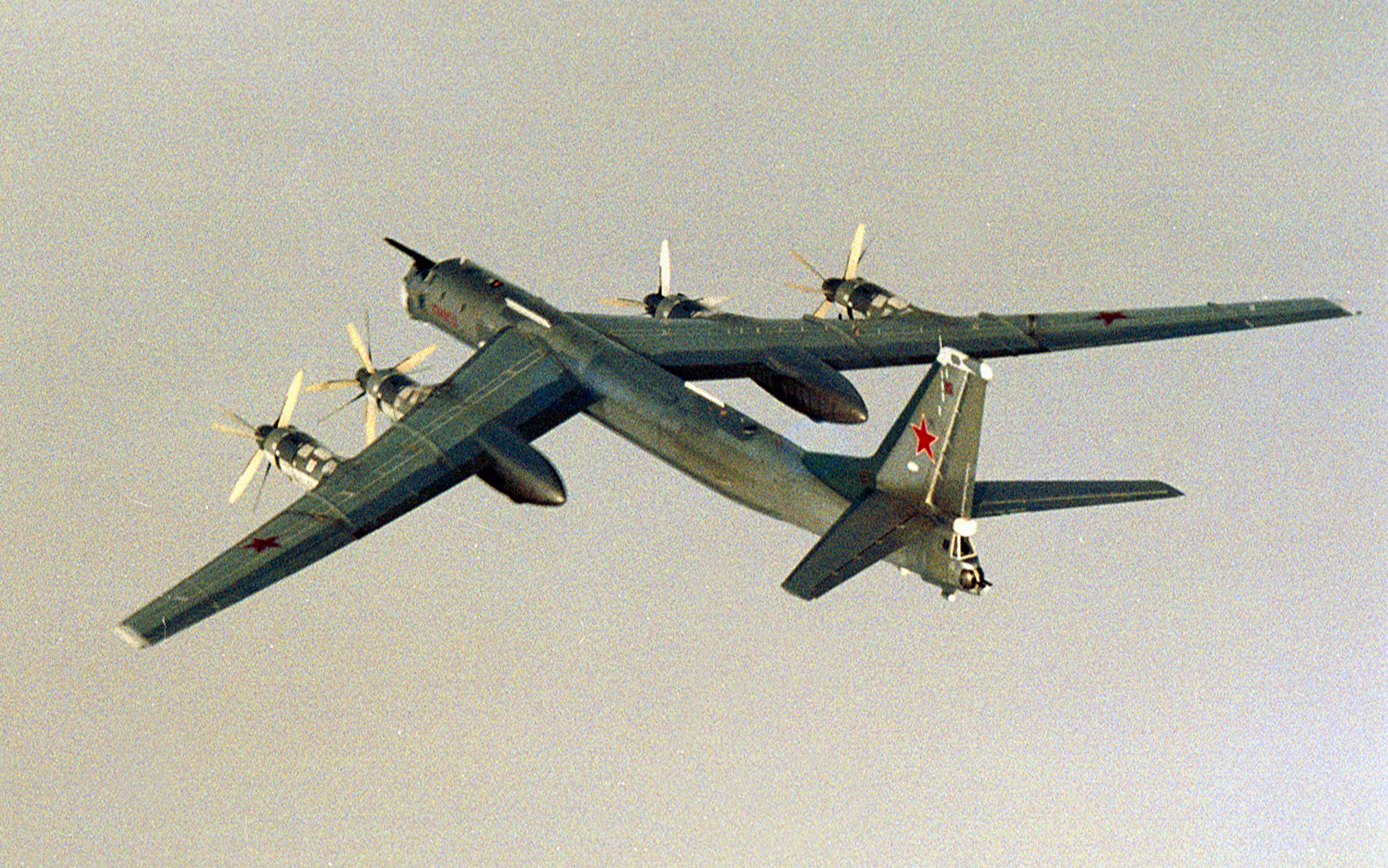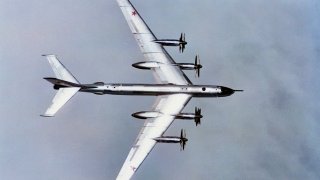Russia's Tu-95 Bomber Just Flew Right into 'Backyard' of Top U.S. Ally
Russian Tu-95 bombers, escorted by Su-35S and Su-30SM fighters, recently conducted a 10-hour flight over the Sea of Japan, marking another strategic patrol amid heightened military activities.
Summary and Key Points: Russian Tu-95 bombers, escorted by Su-35S and Su-30SM fighters, recently conducted a 10-hour flight over the Sea of Japan, marking another strategic patrol amid heightened military activities.

-This follows a joint patrol with Chinese bombers near Alaska's Air Defense Identification Zone. The Russian Ministry of Defense confirmed the operation complied with international airspace regulations, but did not specify which foreign fighters intercepted the bombers.
-This incident is part of Russia's increased bomber patrols in the region, with the Tu-95, a Cold War-era aircraft, continuing to play a crucial role in Moscow's long-range aviation strategy.
Russian Tu-95 Bombers Escorted Over Sea of Japan Amid Rising Tensions
Less than a week after Russian Tupolev Tu-95 and Chinese Xi'an H-6 bombers conducted a joint patrol near the Alaska Air Defense Identification Zone (ADIZ), the Russian Cold War-era long-range aircraft were deployed over the Sea of Japan on Tuesday.
"Two missile-armed Tu-95MS strategic bombers of the Russian Aerospace Force's long-range aviation have carried out a scheduled flight in the airspace over the international waters of the Sea of Japan. The flight lasted more than 10 hours," the Russian Ministry of Defense told state media outlet Tass while noting that the bombers were escorted by Sukhoi Su-35S and Sukhoi Su-30SM fighters.
"At certain stages of the route, the strategic bombers were escorted by foreign fighters," the ministry added. The flight followed international rules involving the airspace over the neutral waters. "Long-range aviation pilots regularly fly over the international waters of the Arctic, the North Atlantic, the Black and Baltic seas, and the Pacific Ocean."
International Response to Tu-95 Bear Bomber
Though the Kremlin acknowledged that the bombers were "escorted by foreign fighters," it didn't indicate which nations intercepted the Russian aircraft. However, according to a report from Stars & Stripes, South Korean jets "made sorties and the military took the necessary measure," while the Japan Air Self-Defense Force (JASDF) also "scrambled fighters to intercept the Russian aircraft."

The exact type of fighters sortied by South Korea and Japan have not been confirmed.
This marks just the most recent offense in which Russian bombers took part in a flight over the Sea of Japan. Just last December, another pair of Russian Aerospace Force's Tu-95s were joined by two Chinese H-6 bombers and took part in a maritime patrol flight over the same waters. That air armada consisted of seventeen aircraft, a scene that the JASDF was quick to notice and respond to by scrambling its fighters to intercept the Russian and Chinese planes.
As with its flights to the waters near Alaska, Moscow has increased its bomber patrols in the Sea of Japan – often employing the Tu-95
The Old Bear Continues to Fly
The Tupolev Tu-95 (NATO reporting name Bear) is among the oldest aircraft designs still flying anywhere in the world, and it is further noted for being the only propeller-powered bomber currently in operation. The Russian Aerospace Forces operates the highly updated Tu-95MS variant, which was actually newly built at the latter stages of the Cold War.
Much like the United States Air Force's Boeing B-52 Stratofortress, the Tu-95 has been steadily upgraded and will likely remain in service well into the 2040s or later.
The choice of propeller-driven engines was made due to the fact that jet engines burned through fuel far too quickly, and the Soviet Air Force lacked the capability to refuel its bombers in flight. Instead of being a speedy bomber, the Tu-95 was noted for being able to fly slowly and steadily to get the job done. Moreover, it was among the only Soviet-era bombers that could fly a distance of 5,000 miles and strike targets within the United States from territory within its borders. The updated variants are reported to have a range that is greater than 9,300 miles (15,000 km).
Though the name "Bear" was originally employed by NATO, it was adopted by the Kremlin as the aircraft's official nickname. The bomber was also a symbol of pride for the Soviet Union and often was demonstrated at European Air Shows.
Despite its first entering service 70 years ago, the Tu-95 wasn't employed in combat until 2015 – when a pair of Tu-95s were used in a series of long-range airstrikes as part of the Russian military intervention in Syria.
Author Experience and Expertise: Peter Suciu
Peter Suciu is a Michigan-based writer. He has contributed to more than four dozen magazines, newspapers, and websites with over 3,200 published pieces over a twenty-year career in journalism. He regularly writes about military hardware, firearms history, cybersecurity, politics, and international affairs. Peter is also a Contributing Writer for Forbes and Clearance Jobs. You can follow him on Twitter: @PeterSuciu. You can email the author: [email protected].
Image Credit: Creative Commons and/or Shutterstock.


